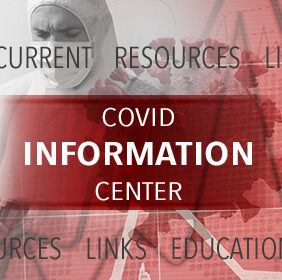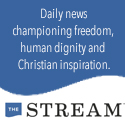
By Meghan Cox Curdon, Wall Street Journal
Raise questions about self-mutilation and incest as a young-adult theme and all hell breaks loose.
If the American Library Association were inclined to burn people in effigy, I might well have gone up in smoke these past few days. ALA members, mostly librarians and other book-industry folk, are concluding their annual conference today in New Orleans, and it’s a fair bet that some of them are still fuming about an article of mine that appeared in these pages earlier this month.
The essay, titled “Darkness Too Visible,” discussed the way in which young-adult literature invites teenagers to wallow in ugliness, barbarity, dysfunction and cruelty. By focusing on the dark currents in the genre, I was of course no more damning all young-adult literature than a person writing about reality TV is damning all television, but from the frenzied reaction you would have thought I had called for the torching of libraries.
Within hours of the essay’s appearance it became a leading topic on Twitter. Indignant defenders of young-adult literature called me “idiotic,” “narrow-minded,” “brittle,” “ignorant,” “shrewish,” “irresponsible” and “reprehensible.” Authors Judy Blume and Libba Bray suggested that I was giving succor to book-banners. Author Lauren Myracle took the charge a stage further, accusing me of “formulating an argument not just against ‘dark’ YA [young-adult] books, but against the very act of reading itself.” The ALA, in a letter to The Journal, saw “danger” in my argument, saying that it “encourages a culture of fear around YA literature.”
The odd thing is that I wasn’t tracking some rare, outlier tendency. As book reviewer Janice Haraydaobserved, commenting on my essay: “Anyone who writes about children’s books regularly knows that [Mrs. Gurdon] hasn’t made up this trend. . . . Books, like movies, keep getting more lurid.”
They do indeed. I began my piece by relating the experience of a Maryland woman who went to a bookstore looking for a novel to give her 13-year-old daughter and who left empty-handed, discouraged by the apparently unremitting darkness of books in the young-adult section. To her and many other parents, the young-adult category seems guided by a kind of grotesque fun-house sensibility, in which teenage turbulence is distorted, magnified and reflected back at young readers.
For families, the calculus is less crude than some notion of fictional inputs determining factual outputs; of monkey read, monkey do. It has more to do with a child’s happiness and tenderness of heart, with what furnishes the young mind. If there is no frigate like a book, as Emily Dickinson wrote, it’s hardly surprising that parents might prefer their teenagers to sail somewhere other than to the lands of rape, substance abuse and mutilation.
But, to some, those are desirable destinations. Many of the angriest responses to my essay came from people who believe that a major purpose of young-adult fiction is therapeutic. “YA Saves!” was the rallying hashtag of thousands of Twitter posters who chose to express their ire in 140 characters or less.
It is true that so-called problem novels may be helpful to children in anguished circumstances. The larger question is whether books about rape, incest, eating disorders and “cutting” (self-mutilation) help to normalize such behaviors for the vast majority of children who are merely living through the routine ordeals of adolescence.
There are real-world reasons for caution. For years, federal researchers could not understand why drug- and tobacco-prevention programs seemed to be associated with greater drug and tobacco use. It turned out that children, while grasping the idea that drugs were bad, also absorbed the meta-message that adults expected teens to take drugs. Well-intentioned messages, in other words, can have the unintended consequence of opening the door to expectations and behaviors that might otherwise remain closed.
If you think, as many do, that novels can’t possibly have such an effect, ask yourself: When you press a wonderful, classic children’s book into a 13-year-old’s hands, are you doing so in the belief that the book will make no difference to her outlook and imagination, that it is merely a passing entertainment? Or do you believe that, somehow, it will affect and influence her? And if that power is true for one book, why not for another?
It so happened that, as the Twitterverse was roiling over “Darkness Too Visible,” I received an advanced reader’s copy of an “edgy paranormal” teen novel coming out in August. Have a look at the excerpt on the back cover, where publishers try to hook potential buyers: “I used to squirm when I heard people talking about cutting-taking a razor to your own flesh never seemed logical to me. But in reality, it’s wonderful. You can cut into yourself all the frustrations people take out on you.” Now ask yourself: Is a book the only thing being sold here?
In the outpouring of response to my essay, I’ve been told that I fail to understand the brutal realities faced by modern teens. Adolescence, I’ve been instructed, is a prolonged period of racism, homophobia, bullying, eating disorders, abusive sexual episodes, and every other manner of unpleasantness.
Author Sherman Alexie asked, in a piece for WSJ.com titled “Why the Best Kids Books Are Written in Blood”: “Does Mrs. Gurdon honestly believe that a sexually explicit YA novel might somehow traumatize a teen mother? Does she believe that a YA novel about murder and rape will somehow shock a teenager whose life has been damaged by murder and rape? Does she believe a dystopian novel will frighten a kid who already lives in hell?”
No, I don’t. I also don’t believe that the vast majority of American teenagers live in anything like hell. Adolescence can be a turbulent time, but it doesn’t last forever and often-leaving aside the saddest cases-it feels more dramatic at the time than it will in retrospect. It is surely worth our taking into account whether we do young people a disservice by seeming to endorse the worst that life has to offer.
Sharon Slaney, who works at a high school in Idaho, touched on this nicely in an online rebuke of her irate librarian colleagues: “You are naive if you think young people can read a dark and violent book that sits on the library shelves and not believe that that behavior must be condoned by the adults in their school life.” It is that question-the condoning of the language and content of a strong current in young-adult literature-that creates the parental dilemma at the core of my essay. It should hardly be an outrage to discuss the subject.
Mrs. Gurdon is the Journal’s children’s books reviewer.
























